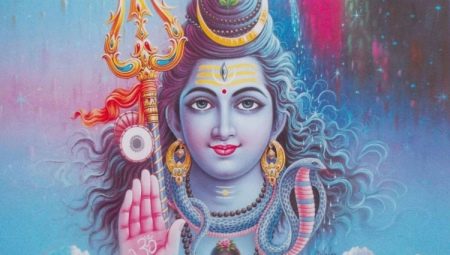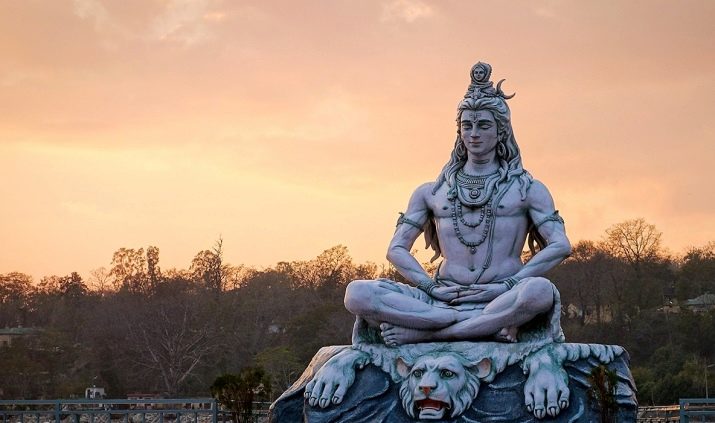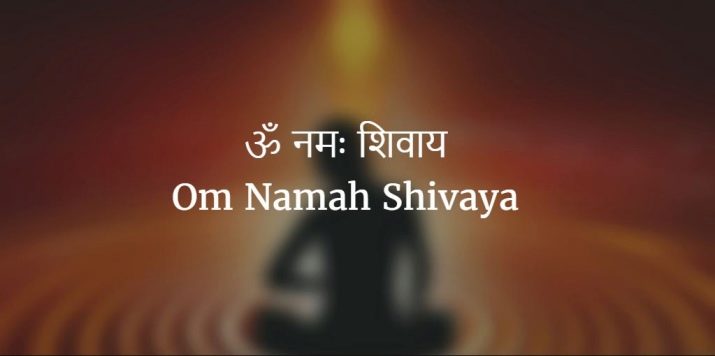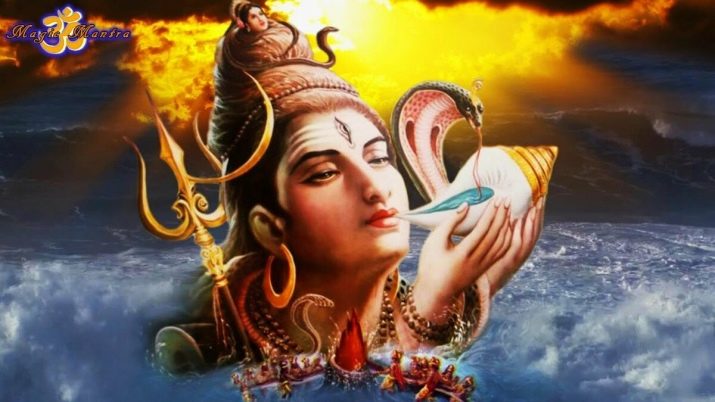All about the mantra Om Namah Shivaya

It is difficult to overestimate the meaning of the most basic and most important mantra, which has always been an integral part of one of the offshoots of Hinduism. Hinduism in this case does not mean one of the Indian religions. The term is used collectively for all directions that appeared on the Indian subcontinent.
Peculiarities
The formation of a religious trend, which has more than a billion adherents, is rooted in deep antiquity - to the Vedic, Harappan and Dravidian civilizations. That's why Hinduism, as a set of the most variable religious worldviews, systems and philosophical views, ranks third in the number of adherents and professors, but is the leader in age among earthly religions.
- In the Indian pantheon there is a huge number of Gods, but only three of them are considered the main ones, who have the ability to control the world eternal cycle of creation. Despite the fact that each of them has adherents who have created a special school, a new cycle is impossible without the participation of all three Gods.
- The creator Brahma, the guardian Vishnu and Shiva the destroyer are three gods who constantly renew the world by performing their main functions.
- Hence the idea of the three Gods as a triad, the unity of trimurti and Shiva (as one face of the Supreme Creator, and not about a dark force or an evil God). Neither new creation nor its preservation is possible without destruction.
- Shiva's supporters are sure that it is he who plays a fundamental role in a closed and eternal cycle. It is no coincidence that Hinduism is translated from Sanskrit as eternal life or eternal religion.

The mantra Om Namah Shivaya, or Panchakshara, the Aghora mantra, is also called the six-syllable mantra or Shadakshara. It is considered one of the most ancient and important incantations of Hinduism and has not lost its relevance for tens of centuries. In Shaivism, which has spread not only in India, but also in Nepal, Sri Lanka, this is the main and most sacred mantra, and Shaivism, according to some religious scholars, is the most ancient of all existing religions of Hinduism.
Doing miracles is not a literal translation of the name, but the reverent attitude of believers to her abilities. Repeated repetition of this long-formed spell creates vibrations in the universe. The sounds included in the verbal formula interact with the primary elements, of which there are five in Hinduism. In addition to the usual earth, water, fire and air, there is also akasha (initial impulse or ether).
Repeatedly created vibrations are directed to create a certain form - the hypostasis of Shiva in the guise of Maheshvara. In the eyes of the adherents of Shaivism, Shiva is not a destroyer, but almighty and good. Connecting with the five elements, the created vibrations simultaneously activate Panchamukha or Panchanana - the hypostasis of Shiva, which has five faces.
Many scriptures not only praise the greatness of this mantra, but also believe that it is with it that the essence of the Vedas, which is hidden in Sri Rudram, is revealed.

Text
The main interpretations of the Panchakshara Mantra are reduced to two directions. The supporters of the first are sure that Namah is used in the meaning of a limited human soul, and the name Shiva does not mean a call to the five-faced God, but to the world spirit - Paramatman. The addition of the ending ya identifies the human soul (jiva) with Paramatman. The beginning of the six-syllable spell is designed to destroy the illusion - Maya, which completely hides the true nature of the surrounding world and ensures its diversity at the same time. This interpretation of the miraculous Hindu mantra is called jnani - knowledge or true knowledge.
The interpretation of bhakti is later, dating from the times of the revitalization of reformist currents in Hinduism. Supporters of this interpretation are sure that Namah is an abbreviation of the word, translated as “not for me,” and Shivaya is an address to God for whom the mantra is uttered. The first syllable in order is the name of the whole world, so in a literal translation it turns out that the reader asserts the belonging of the living and inanimate world to the supreme god - Shiva.
Direct translation, in the opinion of believers, means simply worship of the Good, which Shiva is considered by all adherents of Shaivism.

Volumes of research devoted to the most sacred and revered mantra among all who profess Shaivism have not led to a consensus on its nature and meaning. Adherents of different schools are convinced of the need for a special initiation (diksha) for pronouncing it and that there is no such need. Initiates are confident that repeated repetition will lead to the absence of illusions and the vision of the perfect Universe, which was created by the Almighty Shiva.
There is a variant of pronunciation without the Om syllable, which is also interpreted in two ways. Some are sure that he is implied, and Namah Shivaya is just a subtle form of Panchakshara. Others are convinced that Namah Shivaya is not only the sacred name of God, but also the mysterious essence of all four Vedas. Therefore, the speaker receives a relieved heart and lacrimation from enlightened eyes.
One of the interpretation options is the combination in the mantra of abbreviations from the names of the five elements, where na is earth, mach is water, shi is fire, va is air, and ya denotes ether or initial impulse (akasha).

Who is it for?
If we adhere to the point of view of the supporters of Shaivism, who do not consider it necessary to conduct a deeksha (special initiation) in order to obtain the right to read the omnipotent and miraculous mantra, then it will suit any person. It can be used by anyone belonging to different nationalities and races, and even professing any religion. Pronouncing the great absolute, the formula of the universe will allow a person to:
- destroy during the time of pronouncing your inner, incorrectly arranged world, replacing it with a new, optimal one;
- to gain power over his feelings and over the elements of the Universe, which he unknowingly considers to be beyond his control;
- fulfill cherished desires and open your mind to knowledge;
- strengthen spiritual and material potential, gain health through the patronage of the Good Shiva;
- open the third eye, get away from addictions, bad people and attachments, sins and sinful thoughts.
Despite the modern belief in the absence of the need to comply with the previously prescribed rules (in the opinion of such incompetent people, neither the time of day, nor the number, nor even reading on your own - it is suggested to listen to the mantra in the recording are not important), they are still of great importance. At the same time, it is optimal to sit on the Rudraksha (a tree that grows in the Himalayas at 4 in the morning). Proponents of the need for deeksha believe that the formula is sterile without ritual and without faith.

How to read?
The modern interpretation assumes the possibility of pronouncing a magic formula to create vibrations in the Universe at any time and with any intonation. However, there are still certain recommendations to quickly achieve results. In theory, it can be sung, pronounced aloud, whispered, read aloud, or repeated over and over to oneself.

However, you should remember the rules that must be followed.
- Newly converted adherents of the miraculous mantra will receive results with loud and rhythmic repetition. For this, as during singing, it is necessary to monitor breathing and rhythmic accentuation.
- Om Namah Shivaya can be repeated many times, but necessarily a multiple of 3 the number of times - from 3, 6 and 9 to three million.
- Japa means reciting 108 times, but only with meditation and in a continuous cycle. For this, special rosary beads are used, which allow the prayer not to get lost and read the prescribed number of times. A person can repeat japa as many times as he considers necessary for the fulfillment of his plan and self-improvement.
- For those who want to join the mantra that works miracles, there are records in a variety of versions. He can choose the one that suits his heart and emotions.

Concentration on one's own voice is necessary, but it will appear only after a person gains the courage to pronounce the sacred verse quite loudly, clearly, so that bodily and spiritual vibrations respond to the sounds of the spell. Then you can start spiritual practices - concentration on the chakras, the third eye. Now in the virtual space there are recordings of any length, recorded by different performers. You can easily find a suitable one.








